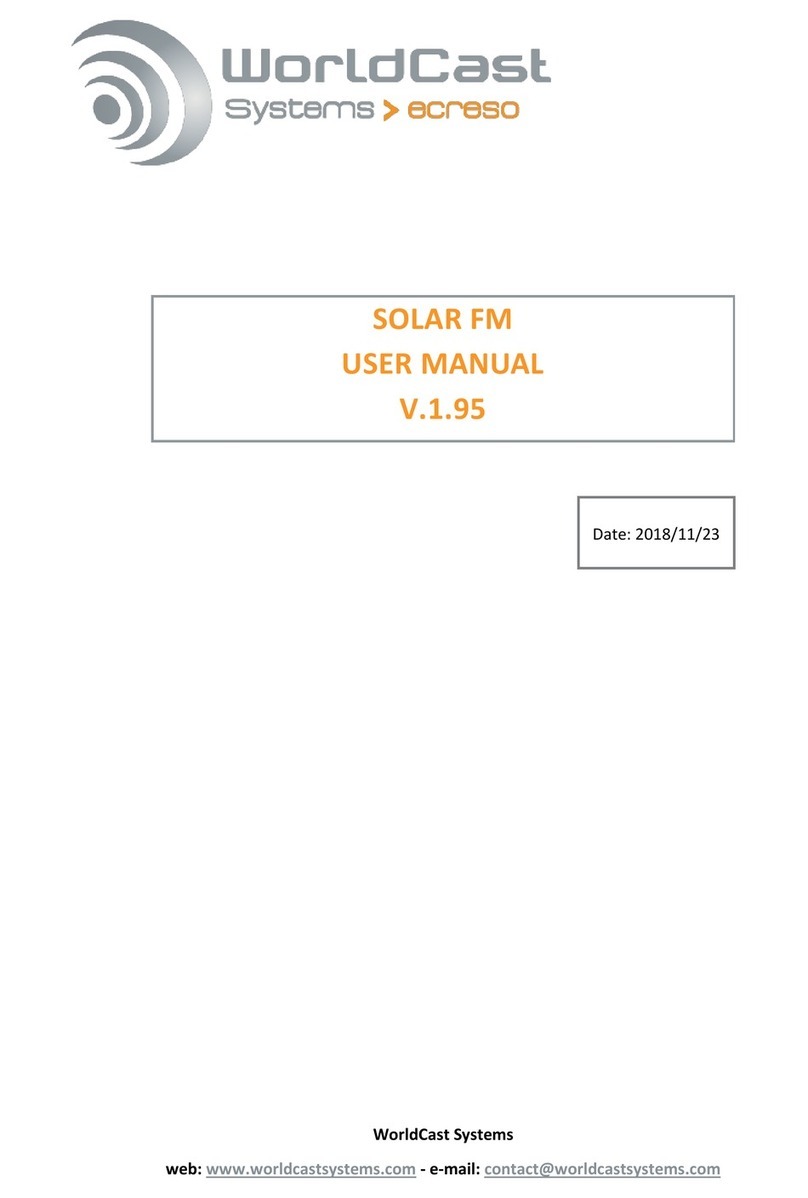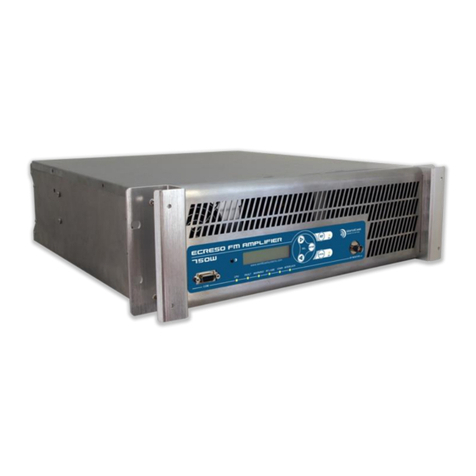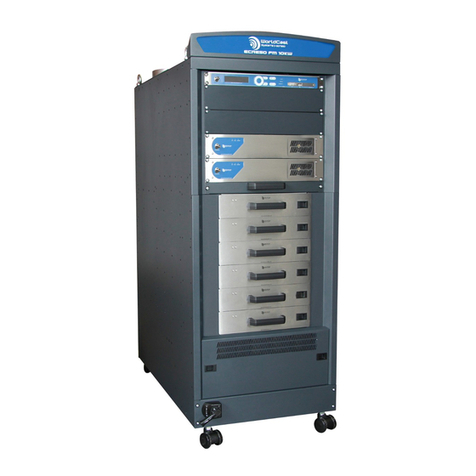
ECRESO FM 100/300 W, user manual–06/2015
Page 4
Head Office : Parc d’activites Kennedy - 20, avenue Neil Armstrong –33700 Bordeaux-Merignac (France)
Tel +33 (0)5 57 928 928 –Fax +33 (0)5 57 928 929 –www.worldcastsystems.com –contact@worldcastsystems.com
4.3.6. Setting the analog or AES inputs ..................................................................................................... 29
4.3.7. Getting on air .................................................................................................................................. 29
4.4. With the Communication Pack option..................................................................................................... 30
4.4.1. Network configuration .................................................................................................................... 30
4.4.2. Connecting to the web interface..................................................................................................... 30
4.4.3. Configuring the transmitter ............................................................................................................ 31
4.4.4. Getting on air .................................................................................................................................. 31
5. MAIN FUNCTIONS AND PARAMETERS DESCRIPTION .................................................................................. 32
5.1. Overview.................................................................................................................................................. 32
5.2. Local mode............................................................................................................................................... 32
5.3. TX/RF parameters .................................................................................................................................... 33
5.4. Input switch parameters.......................................................................................................................... 34
5.5. Line 1 (ANA) parameters ......................................................................................................................... 36
5.6. Line 2 (AES) parameters........................................................................................................................... 37
5.7. MPX parameters ...................................................................................................................................... 37
5.8. Player parameters (audio backup)........................................................................................................... 38
5.9. Audio generator parameters ................................................................................................................... 39
5.10.Modulation parameters........................................................................................................................... 39
5.11.Stereo Encoder parameters..................................................................................................................... 42
5.12.RDS / SCA encoder parameters ............................................................................................................... 42
5.13.FM limiter parameters............................................................................................................................. 44
5.14.RDS parameters ....................................................................................................................................... 46
5.15.SD card parameters ................................................................................................................................. 49
5.16.Date and Time parameters ...................................................................................................................... 50
5.17.System parameters.................................................................................................................................. 50
6. FRONT SCREEN USE..................................................................................................................................... 51
6.1. Overview.................................................................................................................................................. 51
6.2. Working principle .................................................................................................................................... 51
6.3. Structure of the Ecreso FM menus .......................................................................................................... 53
6.3.1. Overview ......................................................................................................................................... 53
6.3.2. First level measurements ................................................................................................................ 54
6.3.3. First level menus ............................................................................................................................. 55
6.3.4. TX PARAMETERS / RF PARAMETERS Menus.................................................................................... 56
6.3.5. ALARMS Menu................................................................................................................................. 57
6.3.6. INPUT SWITCH Menu ...................................................................................................................... 58
6.3.7. LINE1 Menu ..................................................................................................................................... 59
6.3.8. MPX in Menu................................................................................................................................... 60
6.3.9. Audio Gene Menu ........................................................................................................................... 61
6.3.10.Modulation Menu ........................................................................................................................... 62
6.3.11.Stereo encoder Menu ..................................................................................................................... 63
6.3.12.RDS / SCA encoder Menu ................................................................................................................ 64
6.3.13.FM limiter Menu ............................................................................................................................. 65
6.3.14.RDS Menu........................................................................................................................................ 66
6.3.15.Network Menu ................................................................................................................................ 67
6.3.16.COM Menu ...................................................................................................................................... 68
6.3.17.Power supply Menu ........................................................................................................................ 69
6.3.18.Temp/Fan Menu.............................................................................................................................. 70
6.3.19.Time/Date Menu ............................................................................................................................. 71
6.3.20.License Menu .................................................................................................................................. 72
6.3.21.SD Card Menu ................................................................................................................................. 73
6.3.22.About / System Menu ..................................................................................................................... 74































